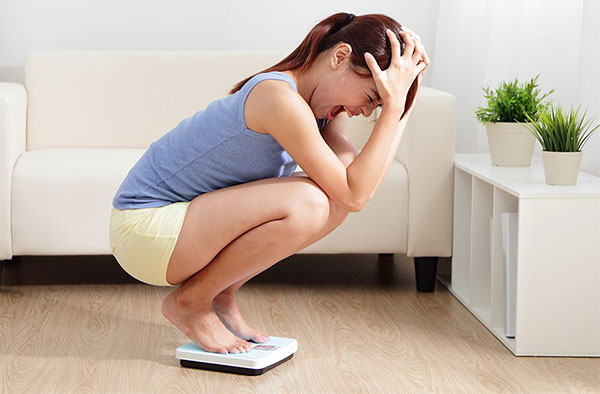Rhinitis is a common condition that can affect many people. There are two types of rhinitis. Allergic rhinitis and non allergic rhinitis. Allergic rhinitis is also known as hay fever, usually caused by pollen, dust, insect bites, or animal dander. Non-allergic rhinitis is brought on from strong perfume, tobacco smoke, or change in weather. Exercise induced rhinitis is when you have symptoms of rhinitis only during exercise.
Symptoms can include nasal congestion, runny nose, sneezing, coughing, post nasal drip, nasal itching, or reduced sense of smell. These symptoms only become present while you are exercising. The severity of exercise induced rhinitis can vary from person to person. This condition can improve and with treatment and lifestyle changes may go away.
Causes
During exercise your body breathes higher volumes of air. This can cause you to be more exposed to things in the environment, dust, pollen, and air temperature. It is normal during exercise that the nasal passages open up, causing mucus to thin and escape from the airways. This can lead to you having a runny nose while you are exercising. It is more common in high intensity or endurance sports such as swimming, cross-country skiing, or track and field.
Being exposed to chlorine raises your likelihood of exercise induced rhinitis. Chlorine can irritate the nasal passages. Already dealing with allergic rhinitis can also raise your risk of developing exercise induced rhinitis.
Other pre-existing conditions that can cause you to be at higher risk are asthma, exercise induced asthma, or exercise induced bronchoconstriction. Having a bacterial or virus infection can also cause you to have exercise induced rhinitis. The environment can also play a role, the amount of pollen in the air, the cold dry air, or pollution.
Treatment
There is no exact treatment for exercise induced rhinitis. There is also no standard diagnosis. Treatments for exercise induced rhinitis may be a mixture of treatments used for allergic rhinitis and non allergic rhinitis. Avoid allergen triggers when necessary. Decongestion nasal sprays or antihistamine nasal sprays may help. Other treatments options are prescription nasal antihistamines, pre-exercise nasal irrigation, changing where you exercise, and staying hydrated
Diagnosis
Allergic rhinitis has two different tests to check for allergies. One is the skin prick test. This is when the skin is pricked, and different allergens are placed on the skin. If the skin has a reaction, that shows there is an allergy response to that certain allergen. Another test that can be done is a blood test. In the blood test the doctor is looking for immunoglobulin E antibodies, these antibodies will point towards certain allergen sensitivities.
If you are diagnosed with a specific allergen your doctor will encourage you to avoid the allergen. Avoidance is the best treatment. When that cannot always be done there are some medication options to help with relief of allergic rhinitis. Anticholinergic nasal sprays are used to help minimize mucus production. Antihistamine nasal sprays and corticosteroid nasal sprays are used to help reduce inflammation in the nasal passages. A decongestant nasal spray can be used to help relieve nasal congestion.
There is no cure for non-allergic rhinitis. Diagnosing non-allergic rhinitis can be tricky too. Diagnosing sometimes consists of eliminating other causes to your symptoms. Your doctor may want to do a skin prick test or a blood test to eliminate allergens out of the mix. Other causes for similar symptoms could be sinusitis, or a cerebrospinal fluid leak. After these are factored out your doctor may ask you to describe what you are doing when your symptoms happen. This may help them figure out what some of your triggers may be, such as strong smelling perfume, weather changes, smoke, stress, hormone changes, or foods. Over the counter treatments include decongestants, antihistamines, nasal sprays, and nasal corticosteroids. Other treatments are prescription nasal antihistamines, pre-exercise nasal irrigation, changing where you exercise, and staying hydrated.
Prevention
There is no one hundred percent way to prevent yourself from suffering from exercise induced rhinitis. There are some things you can do to help alleviate symptoms, or prevent symptoms from occurring.
- One is to warm up gradually.
- You are at a higher risk of developing exercise induced rhinitis if you are undergoing high intensity training.
- Stay hydrated before, during, and after exercising.
- Breathe through your nose while training.
- Choose the right environment to exercise in.
- Use nasal sprays.
- Avoid exercise in the very cold and dry air.
Takeaway
Exercise induced rhinitis can be a nuisance. It usually does not imply that you have anything else serious going on. There are ways to manage the symptoms. Finding triggers and avoiding those can also help. Exercise induced rhinitis can come and go, and in some cases go away completely in time.
Runny nose while exercising? Could be - Exercise Induced Rhinitis #HealthSurgeon
Sources:
https://pubmed.ncbi.nlm.nih.gov/16498856/
https://www.healthline.com/health/exercise-induced-rhinitis#treatment
https://www.mayoclinic.org/diseases-conditions/nonallergic-rhinitis/symptoms-causes/syc-20351229
https://wellself.com/swimming-a-great-workout/









